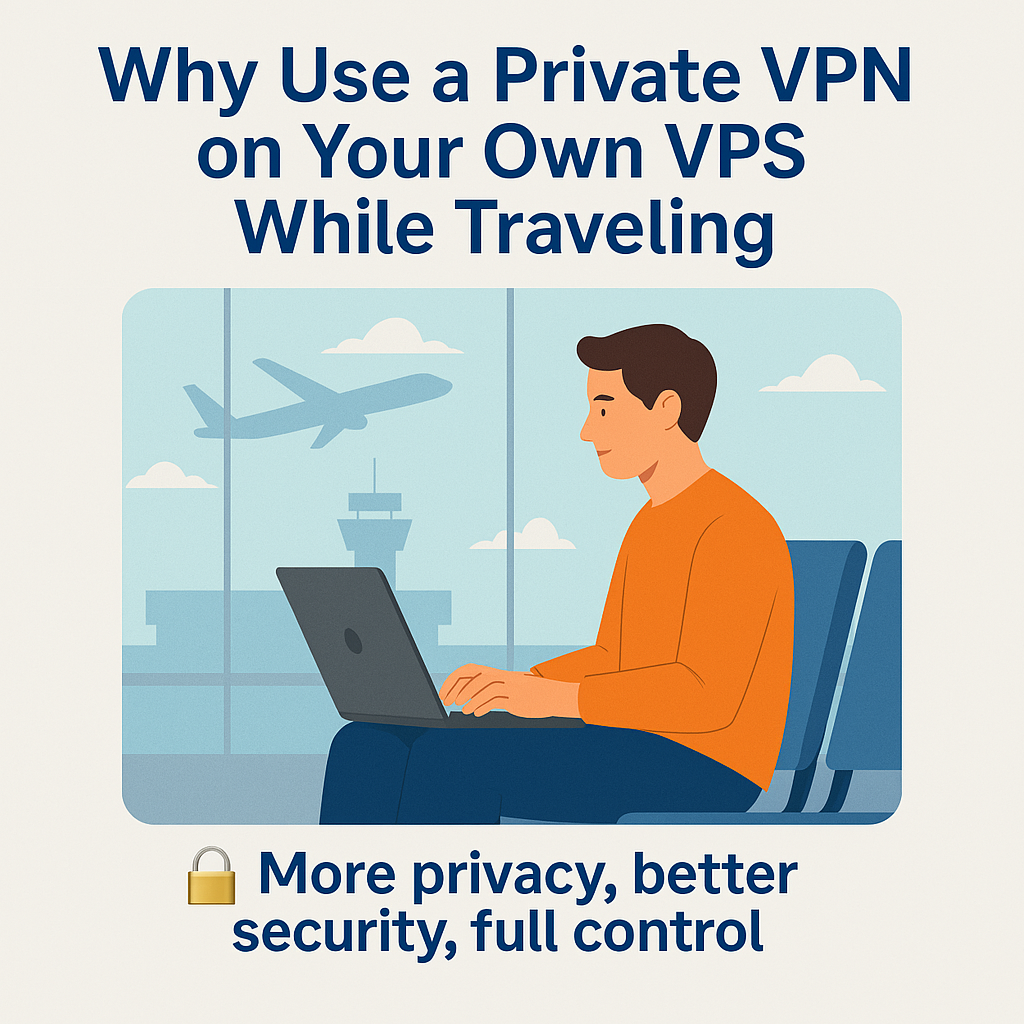
When you’re traveling — whether for work, study, or leisure — using public Wi-Fi networks is often unavoidable. Airports, hotels, cafes, and coworking spaces all offer connectivity, but often at the cost of privacy and security.
While many people turn to commercial VPNs to protect their connection, the best and most secure option is to run your own private VPN on a VPS.
In this post, we’ll explain why that matters and how you can get started using a VPS from Hosteons.
🔐 Why Privacy Matters More When You Travel
When you use public networks, your data is at risk from:
- 🕵️♂️ Network sniffing and man-in-the-middle attacks
- ❗ Fake Wi-Fi hotspots
- 👁️ ISP or network logging and censorship
- 🚫 Location-based content restrictions
VPNs solve this by encrypting your traffic and routing it through a trusted server — but who controls that server matters a lot.
🤔 The Problem with Public/Commercial VPNs
While commercial VPNs are better than nothing, they come with some caveats:
- ❌ Shared IPs — may be flagged, banned, or blacklisted
- ❌ Limited trust — you’re trusting a third-party company with your traffic
- ❌ Logs and data retention — not all “no-log” policies are actually enforced
- ❌ Performance throttling — many commercial VPNs limit speeds or locations
- ❌ Overcrowded servers — inconsistent speeds and high latency
In short, you’re still handing over your traffic to someone else.
✅ Why a Private VPN on Your VPS is Better
Setting up a VPN on your own VPS solves most of these issues — and gives you full control.
✨ Benefits of Running a VPN on Your Own VPS:
- Full Control
- You own and configure the server — no third-party snooping.
- Dedicated IP Address
- No one else shares your IP, reducing chances of blacklisting or captchas.
- Custom Configuration
- Choose your encryption, protocol (WireGuard, OpenVPN, etc.), DNS, and firewall rules.
- Faster Speeds
- Avoid the bandwidth bottlenecks common with commercial VPNs.
- Consistent Access While Abroad
- Appear to be at “home” and access region-specific services like banking or Netflix.
- Bypass Local Censorship or Firewalls
- Secure access even in restrictive countries.
- Affordable
- VPS plans from Hosteons start at just $1.75/month — often cheaper than VPN subscriptions.
🌐 Recommended VPN Protocols
You can install and run any of the following on your Hosteons VPS:
- WireGuard – Lightweight, fast, and secure. Great for mobile.
- OpenVPN – Highly configurable and widely supported.
- Shadowsocks / V2Ray – Ideal for bypassing censorship in restricted regions.
- IPSec / L2TP – Good compatibility with built-in OS VPN support.
Need help? Check out our tutorials for in our knowledge based articles for various types of VPN and Proxy on Hosteons.
🧭 VPS Locations for Best Travel VPN Experience
Choose your VPS location based on:
- Your home country (to access region-locked services)
- A neutral/nearby country for lower latency
- High-bandwidth regions (like Germany, or Los Angeles)
Hosteons offers VPS in multiple locations globally, with inbound unmetered bandwidth and IPv6 support.
🔐 Bonus Tip: Add Your Own DNS & Firewall Rules
Once you’ve set up your private VPN:
- Use custom DNS servers like NextDNS or AdGuard
- Set firewall rules to block tracking domains or limit open ports
- Enable kill switches on mobile and desktop to avoid leaks
🧰 What You’ll Need to Get Started
- A Hosteons VPS (1 CPU, 512MB+ RAM is enough for VPN)
- A domain (optional, for easier connection)
- Basic Linux knowledge or follow one of our setup scripts
- Your laptop or mobile devices
🚀 Ready to Travel Securely?
Don’t rely on sketchy free VPNs or overcrowded commercial services. Take control of your online privacy and performance with a self-hosted VPN on your own VPS.
🔗 Explore Hosteons VPS plans starting at just $1.75/month:
Need help setting it up? We’re always here → https://my.hosteons.com
